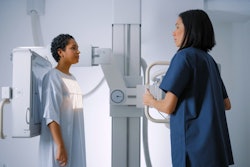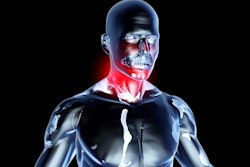Up to 44% of diagnostic errors are due to laboratory tests and radiology exams that were inappropriately ordered, according to research published January 2 in the Journal of the American College of Radiology.
The statistic underscores a need to improve the imaging exam ordering process, particularly for CT and MR imaging, which would not only benefit patients but also radiologists, wrote a team led by Ariadne DeSimone, MD, of Brigham and Women's Hospital in Boston.
"Reducing the order error rate may minimize diagnostic errors and potentially minimize harm to patients," the group noted. "Additionally, it would shift time spent by radiologists on noninterpretive tasks of investigating and remedying incorrect orders (a secondary form of waste) to image interpretation, thereby decreasing workflow interruptions."
A 2015 report from the National Academies of Sciences, Engineering, and Medicine found that "diagnostic test selection and ordering is a key point of vulnerability in the diagnostic process due to the considerable volume and variety of available tests, which make it difficult for clinicians to accurately select the correct test or series of tests." Yet the incidence of diagnostic errors due to incorrect CT or MRI orders has not been thoroughly studied, DeSimone and colleagues wrote, explaining that incorrect imaging exam orders can include those that call for the wrong imaging modality or technique, the wrong anatomy, or the wrong contrast-related request.
The investigators assessed order error rates for vascular imaging exams and evaluated the efficacy of a two-part quality intervention measure on those rates. They performed three types of assessments of order errors based on data from a total of 844 orders for CT and MRI vascular imaging exams:
- 306 orders placed before interventions were implemented (July to September 2021).
- Postintervention 1: 353 orders placed after putting into place an initiative in the cardiac surgery department that consisted of a customized order option in the electronic health record for routine pre-operative patients (February to March 2022).
- Postintervention 2: 185 orders placed following an educational/feedback initiative provided by radiologists to referring providers (May to June 2022).
After intervention 1 was implemented, the error rate dropped by 83%, from 16% to 3% (p < 0.001). The team also found that CT chest exams with or without contrast made up the majority of incorrect orders, at 44% with the most common reason for these orders listed as "pre-op" (32%). As for the type of physician, cardiac surgeons made the most incorrect orders, at 32%.
In any case, radiologists play a key role in offering referring providers support for making the correct imaging order, DeSimone and colleagues wrote.
"These findings suggest combining tailored order options in the electronic health record with education and feedback on practice habits can improve the accuracy of imaging orders, thereby mitigating the overall order error rates," they concluded.
The complete study can be found here.




















